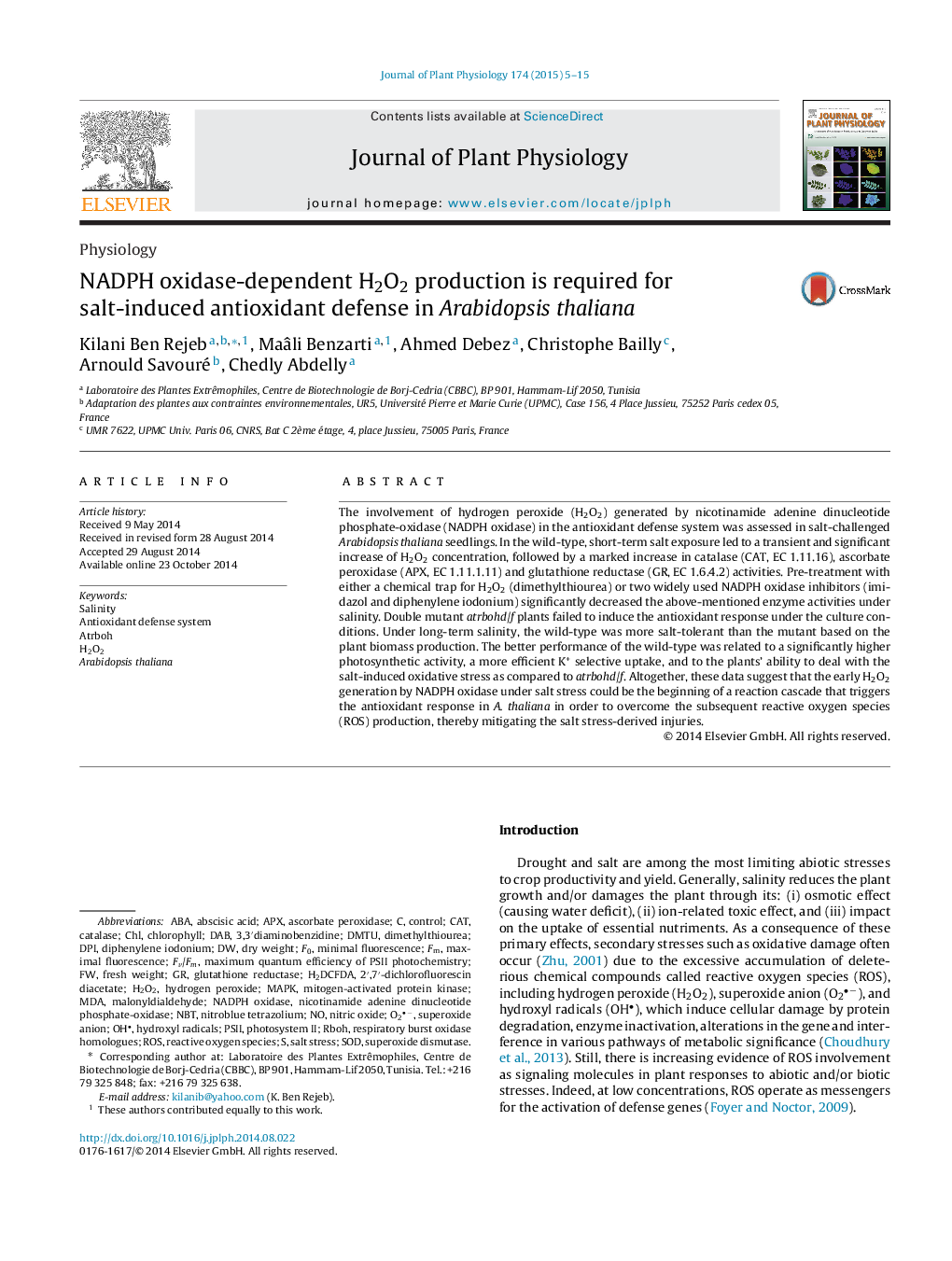| Article ID | Journal | Published Year | Pages | File Type |
|---|---|---|---|---|
| 2055780 | Journal of Plant Physiology | 2015 | 11 Pages |
The involvement of hydrogen peroxide (H2O2) generated by nicotinamide adenine dinucleotide phosphate-oxidase (NADPH oxidase) in the antioxidant defense system was assessed in salt-challenged Arabidopsis thaliana seedlings. In the wild-type, short-term salt exposure led to a transient and significant increase of H2O2 concentration, followed by a marked increase in catalase (CAT, EC 1.11.16), ascorbate peroxidase (APX, EC 1.11.1.11) and glutathione reductase (GR, EC 1.6.4.2) activities. Pre-treatment with either a chemical trap for H2O2 (dimethylthiourea) or two widely used NADPH oxidase inhibitors (imidazol and diphenylene iodonium) significantly decreased the above-mentioned enzyme activities under salinity. Double mutant atrbohd/f plants failed to induce the antioxidant response under the culture conditions. Under long-term salinity, the wild-type was more salt-tolerant than the mutant based on the plant biomass production. The better performance of the wild-type was related to a significantly higher photosynthetic activity, a more efficient K+ selective uptake, and to the plants’ ability to deal with the salt-induced oxidative stress as compared to atrbohd/f. Altogether, these data suggest that the early H2O2 generation by NADPH oxidase under salt stress could be the beginning of a reaction cascade that triggers the antioxidant response in A. thaliana in order to overcome the subsequent reactive oxygen species (ROS) production, thereby mitigating the salt stress-derived injuries.
